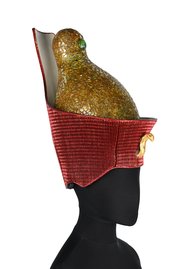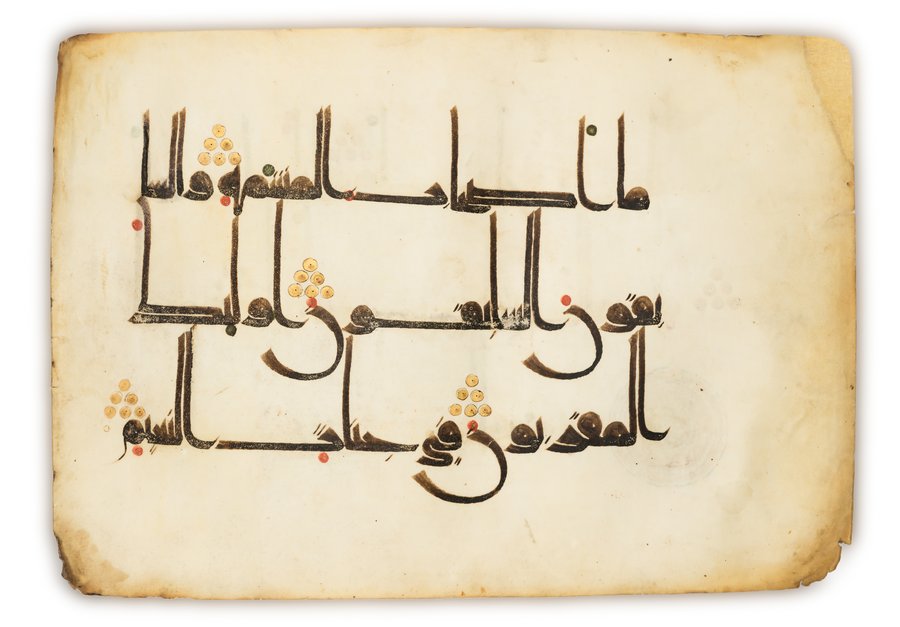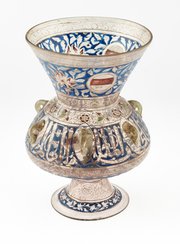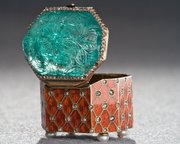
Folio from a Qur’an manuscript in kufic script
Museum of Islamic Art
- Title:
- Folio from a Qur’an manuscript in kufic script
- Production place:
- North Africa
- Date:
- 900 - 1000
- Period:
- Abbasid
- Title:
- Folio from a Qur’an manuscript in kufic script
- Production place:
- North Africa
- Date:
- 900 - 1000
- Period:
- Abbasid
- Material:
- Parchment, Ink, Gold
- Technique:
- Calligraphy
- Dimensions:
- 24 × 33.7
Written on polished and smooth cream parchment in dark brown ink with touches of colours to indicate vocalisation when needed, this folio comes from an importat early Qur'an manuscript. The kufic script adopted by the calligrapher is notable for its unusual features: the elongation of the vertical letters, the sweeping curves of the terminal letter nun, and the very fine and thin tail of the terminal min (last letter of the third line). Diacritical marks are conventionally indicated by diagonal dashes and verses are separated by gold dots arranged into pyramids. The tenth verse division is marked by a large illuminated rosette on the margin bearing the word 'ashr (ten) in reserve in the centre. Due to the rather large format of the calligraphy, each folio (recto and verso) would accomodate for a maximum of six lines of text, meaning the whole manuscript would have required a large quantity of costly parchment to be completed. This suggests that the manuscript was most probably produced for a very affluent and important patron.
This particular form of the kufic script is found on two other known early Qur'an manuscripts, whose folios are scattered among different collections worldwide.



